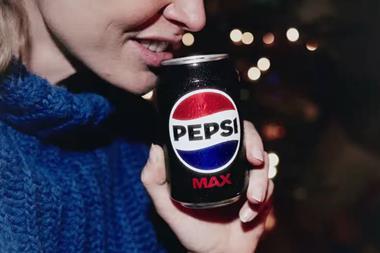As retailers drive the price of dry pasta down, value will be generated by brands getting a bigger share of the action
Dry pasta has had a year of change, with the fire at the Geest factory in April resulting in several retailers switching suppliers and some brands gaining wider distribution.
“Dry pasta has seen big changes in the past 12 months with more premium products to supplement the core range helping consumers to trade up,” says Neil Brownbill, marketing director for Princes International Trading, which owns the Napolina brand.
However, despite their best efforts and ambient pasta growth of 5%, branded players are still in the minority.
According to Nigel Singh, Pasta Lensi’s UK representative, price is the only consideration for own label products, which have a stranglehold on the category. “Retailers see the category purely as commodity and with massive overcapacity it’s a buyer’s market.”
Alessio Puglisi, MD at
Sicilian-based ambient pasta manufacturer Puglisi,says many brand manufacturers avoid entering the category because of the low margins, although he says brands rather than own label products are driving the growth. He says: “Dry pasta has a lot of potential in the UK, but the majority of the market is in the hands of the multiples. Consumption rates have a long way to go before reaching the likes of Italy, but the UK even falls behind countries not typically associated with pasta such as Germany and France.”
With certain own label dry pasta now retailing at a low of 19p, Singh believes manufacturers are not generating enough profits to invest in their brands. “The world’s largest pasta maker - Barilla - withdrew from the UK two years ago citing it was not commercially viable to do business here,” says Singh.
Brands are, however, starting to fill the premium gap left open by a focus on low-cost own
labels. Tesco, in particular, has driven dried shapes by promoting the entire fixture with more merchandising. The activity has resulted in 980,000 new households buying dried pasta from Tesco alone in the past year [TNS].
Puglisi re-entered the UK in August with a premium dried pasta brand, tapping into the growth of dried pasta shapes with traditional products such as maccheroncini di casa and spaccarella casareccia, which are exclusive to the company.
Pasta Lensi, meanwhile, is embarking on a campaign for its super premium Pasta Chef products made exclusively for independents and department stores. The company is launching a consumer campaign next year appealing to foodies with a competition to win cooking lessons in Tuscany, as well as a tie-in with Sacla’ sauces.
The long-term hope for the industry will rest on the health trend, says Singh. “As chips, chicken nuggets and Turkey Twizzlers disappear from schools’ menus, pasta is the most obvious replacement.”
Pasta King, which produces meals for foodservice and schools, says that sales of its pasta dishes are growing exponentially as the food is seen as a healthy alternative to high fat, high calorie foods. “As the nation becomes more health-conscious about the nutritional value of what they eat this is raising the popularity of pasta,” says Sally Wheaton, Pasta King MD.
Growing interest in healthier eating habits, driven in part by the popularity of the Glycaemic Index diet, has already increased sales of wholewheat pasta. Pasta Lensi has a range of pasta products called Fibre Plus aimed at the GI diet fan, as well as the type of consumer who would purchase other wholegrain products, such as cereals.
According to Anna Maginness, assistant brand manager at Nestlé’s Buitoni, the wholewheat pasta category is now worth £6.6m. The company has launched an innovation plan to drive growth into the category including wholewheat and fibre rich pasta.
Dry pasta has had a year of change, with the fire at the Geest factory in April resulting in several retailers switching suppliers and some brands gaining wider distribution.
“Dry pasta has seen big changes in the past 12 months with more premium products to supplement the core range helping consumers to trade up,” says Neil Brownbill, marketing director for Princes International Trading, which owns the Napolina brand.
However, despite their best efforts and ambient pasta growth of 5%, branded players are still in the minority.
According to Nigel Singh, Pasta Lensi’s UK representative, price is the only consideration for own label products, which have a stranglehold on the category. “Retailers see the category purely as commodity and with massive overcapacity it’s a buyer’s market.”
Alessio Puglisi, MD at
Sicilian-based ambient pasta manufacturer Puglisi,says many brand manufacturers avoid entering the category because of the low margins, although he says brands rather than own label products are driving the growth. He says: “Dry pasta has a lot of potential in the UK, but the majority of the market is in the hands of the multiples. Consumption rates have a long way to go before reaching the likes of Italy, but the UK even falls behind countries not typically associated with pasta such as Germany and France.”
With certain own label dry pasta now retailing at a low of 19p, Singh believes manufacturers are not generating enough profits to invest in their brands. “The world’s largest pasta maker - Barilla - withdrew from the UK two years ago citing it was not commercially viable to do business here,” says Singh.
Brands are, however, starting to fill the premium gap left open by a focus on low-cost own
labels. Tesco, in particular, has driven dried shapes by promoting the entire fixture with more merchandising. The activity has resulted in 980,000 new households buying dried pasta from Tesco alone in the past year [TNS].
Puglisi re-entered the UK in August with a premium dried pasta brand, tapping into the growth of dried pasta shapes with traditional products such as maccheroncini di casa and spaccarella casareccia, which are exclusive to the company.
Pasta Lensi, meanwhile, is embarking on a campaign for its super premium Pasta Chef products made exclusively for independents and department stores. The company is launching a consumer campaign next year appealing to foodies with a competition to win cooking lessons in Tuscany, as well as a tie-in with Sacla’ sauces.
The long-term hope for the industry will rest on the health trend, says Singh. “As chips, chicken nuggets and Turkey Twizzlers disappear from schools’ menus, pasta is the most obvious replacement.”
Pasta King, which produces meals for foodservice and schools, says that sales of its pasta dishes are growing exponentially as the food is seen as a healthy alternative to high fat, high calorie foods. “As the nation becomes more health-conscious about the nutritional value of what they eat this is raising the popularity of pasta,” says Sally Wheaton, Pasta King MD.
Growing interest in healthier eating habits, driven in part by the popularity of the Glycaemic Index diet, has already increased sales of wholewheat pasta. Pasta Lensi has a range of pasta products called Fibre Plus aimed at the GI diet fan, as well as the type of consumer who would purchase other wholegrain products, such as cereals.
According to Anna Maginness, assistant brand manager at Nestlé’s Buitoni, the wholewheat pasta category is now worth £6.6m. The company has launched an innovation plan to drive growth into the category including wholewheat and fibre rich pasta.













No comments yet